Types of Supply Chains
As a good book with current research on supply chain management I often recommend Supply Chain Management and Advanced Planning: Concepts, Models, Software, and Case Studies, edited by Stadtler and Kilger. In this review I refer to chapter 3 of that book, which goes into the details of different types of supply chains.
The understanding of the specific types of supply chains is especially useful from a viewpoint where multiple supply chains are analyzed. This could be within a larger company with several different supply chains or a consultant or researcher who wants to tailer strategies to reduce risks for a specific type of supply chain network.
Structure
The chapter is conceptual in nature and prescribes supply chain attributes which may be functional or structural in nature. As the last part a consumer goods and a computer assembly supply chain from a previous case study are characterized according to that scheme.
Functional attributes
The functional attributes fall into four categories: procurement type, production type, distribution type and sales type (figure 1).
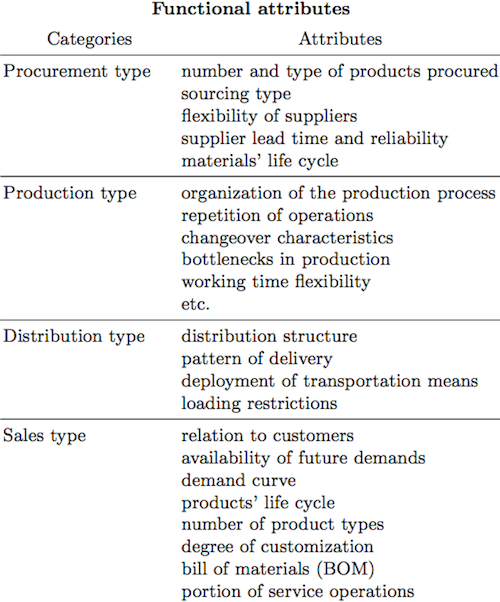
Structural attributes
The structural attributes define the topography of the supply chain and the integration and coordination. They are summarized in figure 2.
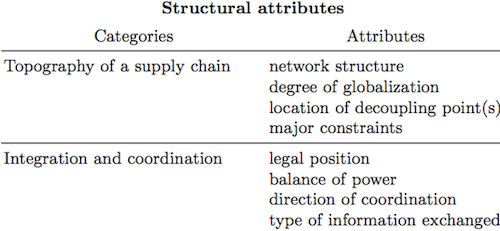
Case: consumer goods
Using the data from a case study the authors then select the parameters of a typical supply chain in the consumer goods industry. Figure 3 shows the supply chain’s distribution network, starting with the factories, the central and regional warehouses and the trans-shipment points (CW, RW, TP) and ending with the retailers.
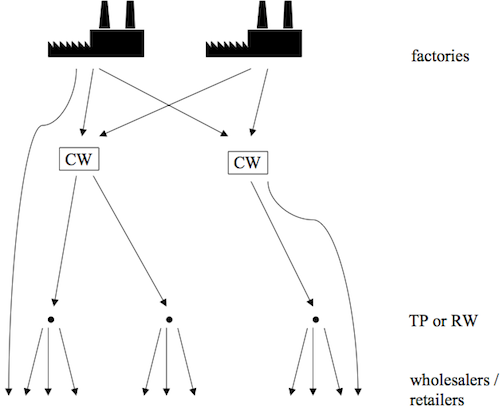
From the case study the authors select the following functional and structural attributes of a typical consumer goods supply chain (figure 4).
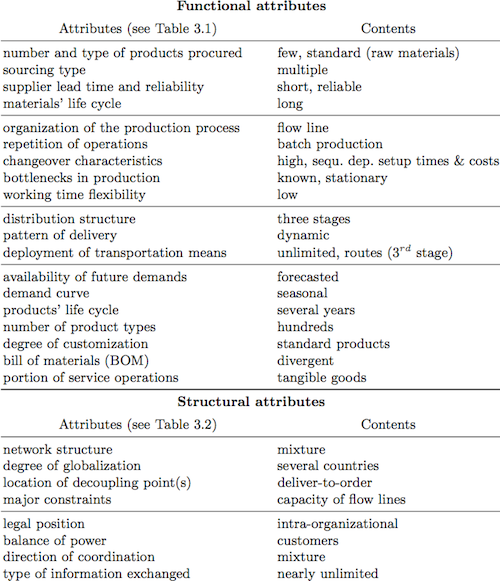
Case: computer assembly
Another case study unravels the typical properties of a supply chain for computer assembly (figure 5).
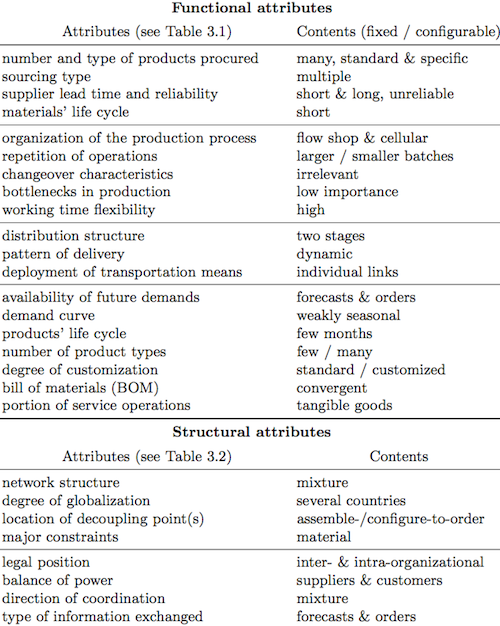
Conclusion
Analyzing the strategic properties of supply chains is also quite important to my own research as well, and I find the selection of the different attributes in this chapter quite intriguing, even though some of them might be too far on the operational level.
The application of such a framework on the other hand requires a lot of care, since the parameters have to be analyzed and applied equally for each supply chain. Especially in the case of a generalization, where a “typical” case should be described, it is, in my point of view, necessary that the foundation of these common denominators are clearly described, a feature which is missing in the chapter completely.
I also doubt that it is possible to deduce the properties of an average supply chain from a singular case study at all. So one has to ask if the right method has been chosen for this chapter.
Nonetheless, overall I do think the categories which have been suggested can be very useful to analyze and differentiate supply chain types.
Meyr, H., & Stadtler, H (2008). Types of Supply Chains Supply Chain Management and Advanced Planning, 65-80








Add new comment